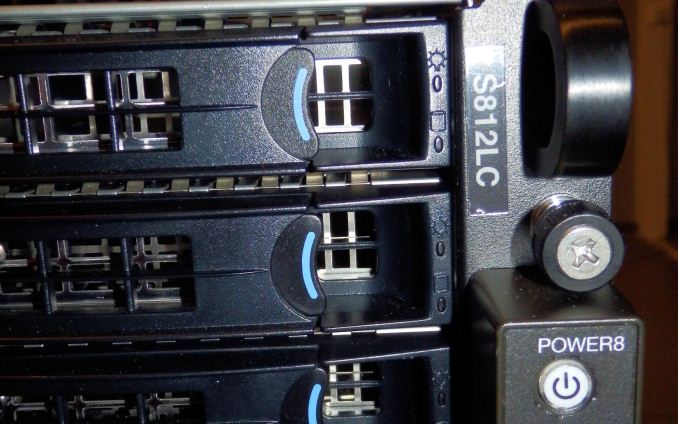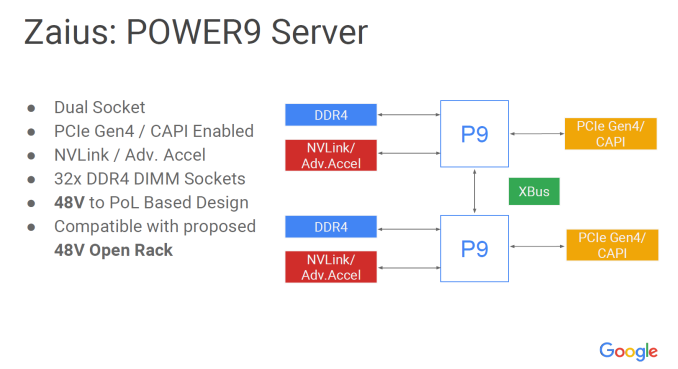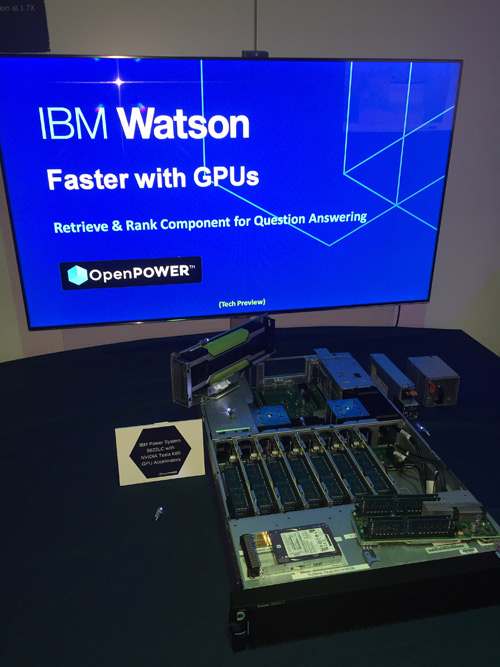Assessing IBM's POWER8, Part 2: Server Applications on OpenPOWER
by Johan De Gelas on September 15, 2016 8:01 AM EST
How serious are IBM's OpenPOWER efforts? It is a question we got a lot after publishing our reviews of the POWER8 and POWER8 servers. Despite the fact that IBM has launched several scale out servers, many people still do not see IBM as a challenger for Intel's midrange Xeon E5 business. Those doubts are understandable if you consider that Linux based systems are only 10% of IBM's Power systems sales. And some of those Linux based systems are high-end scale up servers. Although the available financial info gives us a very murky view, nobody doubts that the Linux based scale out servers are only a tiny part of IBM's revenue. Hence the doubts whether IBM is really serious about the much less profitable midrange server market.
At the same time, IBM's strongholds – mainframes, high-end servers and the associated lucrative software and consulting services – are in a slow but steady decline. Many years ago IBM put into motion plans to turn the ship around, by focusing on Cloud services (Softlayer& Bluemix), Watson (Cognitive applications, AI & Analytics) and ... OpenPOWER. If you pay close attention to what the company has been saying there is little doubt: these three initiatives will make or break IBM's future. And cloud services will be based upon scale out servers.
The story of Watson, the poster child of the new innovative IBM, is even more telling. Watson, probably the most advanced natural language processing software on the planet, started its career on typical IBM Big Iron: a cluster of 90 POWER 750 servers, containing 2880 Power7 CPUs and 16 TB of RAM. We were even surprised that this AI marvel was on the market for no more than 3 million dollars. The next generation for Watson cloud services will be (is?) based upon OpenPOWER hardware: a scale out dual POWER8 server with NVIDIA's K80 GPU accelerator as the basic building block. An OpenPOWER based Watson service is simply much cheaper and faster, even in IBM's own datacenters. But there is more to it than just IBM's internal affairs.
Google: "a simple config change"
Google seems to be quite enthusiastic about OpenPOWER. Google always experimented with different architectures, and told the world more than once that it was playing around with ARM and POWER based servers. However, the plans with OpenPOWER hardware are very tangible and require large investments: Google is actively developing a POWER9 server with Rackspace.

"Zaius, the OpenPOWER POWER9 server of Google and Rackspace"
Google has also publicly stated that "For most Googlers, enabling POWER is a config change". This far transcends the typical "we experimenting with that stuff in the labs".
So no wonder that IBM is giving this currently low revenue but very promising project such a high priority. And the pace increases: IBM just announced even more "OpenPOWER based" servers. The scale out server family is expanding quickly...











49 Comments
View All Comments
JohanAnandtech - Sunday, September 25, 2016 - link
Thanks Jesper. Looks like I will have to spend even more time on that system :-). And indeed, out of the box performance is important if IBM ever wants to get a piece of the x86 market.luminarian - Thursday, September 15, 2016 - link
It was my understanding that the SMT mode on the power8 could be changed. Depending on the type of work this would make a giant difference, especially with mysql/mariadb that are limited to 1 process/thread per connection.With databases the real winner would be with one that supports parallel queries, such as postgresql 9.6, db2, oracle, etc.
Also yer bench mark very easily could be limiting the power8 if its not opening enough connections to fill out the number of threads that thing can handle, remember mysql/mariaDB are 1 process/thread per connection. Alot of database bench marks default to a small number of connections, this thing has 160 threads with the dual 10 core. I would suggest trying to run that same benchmark again but do it at the same time from multiple client machines. See if the bench takes a larger dip when a second client machine runs the same bench or if the bench shows similar figures(granted this might hit hd io limit on the power8 server).
So yea, that and try SMT-2 and SMT-4 modes.
JohanAnandtech - Friday, September 16, 2016 - link
Hi, I tried SMT-4, throughput was about 25% worse: 11k instead 14k+. 95th perc response time was better: 3.7 ms.JohanAnandtech - Friday, September 16, 2016 - link
updated the MySQL graphs with SMT-4 data. Our Spark tests gets worse with SMT-4 and that is also true for SPECjbb.luminarian - Friday, September 16, 2016 - link
Awesome, Thanks for the response.Meteor2 - Friday, September 16, 2016 - link
The HPC potential is awesome. You can really see why Oak Ridge chose POWER9 and Volta.Communism - Sunday, September 18, 2016 - link
Pretty sure most of the reason for that is due to Intel blocking every attempt Nvidia makes at getting a high bandwidth interface bolted onto a Xeon.Given that one of the main reasons that Intel blocked Nvidia's chipset business way back in the day was to try to limit the ability of other companies bolting on high bandwidth accelerators onto Intel chips (Presumably to protect their own initiatives in that space).
Klimax - Saturday, September 17, 2016 - link
Not terribly impressive. You have to get SW to paly nice and spend time to fine tune it to outperform Intel and it will cost you in power and cooling. More like "yes, if you get quite bigger TDP you get bit more power". And it won't be terribly good in many cases. (Like public facing service where latency is critical)Maybe if you are in USA and can waste admins and devs time and waste a lot on cooling and electricity then maybe. Otherwise why bother...
SarahKerrigan - Sunday, September 18, 2016 - link
I don't see this as a bad result. This is a 22nm processor, over two years old, and it beats Haswell-EP (which is newer) on efficiency. Broadwell-EP is brand new, and P9 should come out well before the end of BDW-EP's lifecycle.Kevin G - Sunday, September 18, 2016 - link
Some of the POWER9 chips will be out next year though is suspect that the scale-up models maybe an early 2018 part. Considering that those chips go into IBM's big iron Unix servers, they tend to launch a bit later than the low end models so it isn't game changing.The real question is when SkyLake-EP/EX will launch and in comparison to the scale-out POWER9 chips. I was expecting a first half of 2017 for the Intel parts but I have no reference as to when to expect the POWER9 SO chips. Thus there is a chance Intel can come out first.
Intel also wants a quick transition to SkyLake-EP/EX as they unify those to lines to some extent and provide some major platform improvements. I'm thinking Broadwell-EP/EX will have a relatively short life span compared to Haswell-EP/EX. This mimics much of what happened on the desktop and the challenge to move to 14 nm.